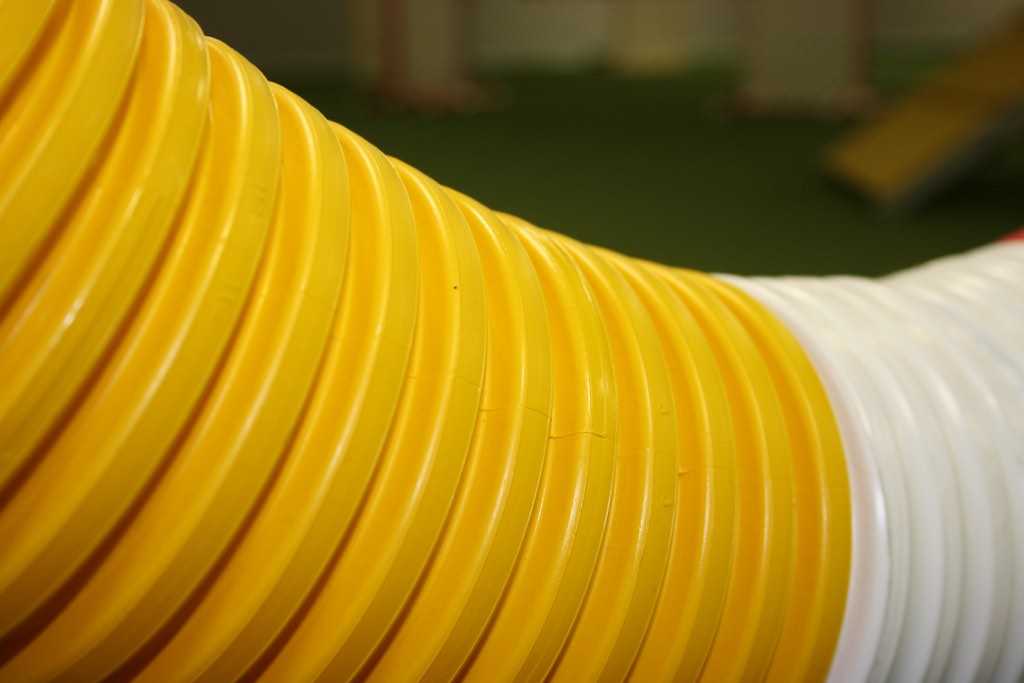Rewarding the Flyball Dog
30 Nov 2004
A lady wrote into the AgilityDogs email list asking about how to get her dog started tugging. I was reminded of a really good online article by Susan Garrett. I used a similar approach to get Milo interested in tugging and have recommended this article to all my Flyball students.
Here is a link to the article: How to Create a Motivating Toy
In order to train a dog to excel in Flyball you need to have a reward for the dog at the end of the run that has a higher value to the dog than the act of running and getting the ball. Some dogs work very hard for treats or squeaky toys. I’ve seen handlers reward their dogs with Soccer balls, Frisbees, and even a galvanized water bucket! But whatever you use it has to provide a powerful incentive for the dog to want to play the game.
Almost anything can be a motivating toy to a dog. I know some Agility handlers who train their dogs to tug on their leashes. They usually use either fleece or the thick woven English slip style leads. This has a few advantages at a trial. The leash “reward” is available to the dog immediately upon exit from the course (no 10-15 foot restriction as is required for treats or other toys), so the dog can get their tugging reward right away. This also helps keep the dog from leaving the ring “not under handler control” so there is little chance for being penalized for that newer rule. Lastly you always have a toy on hand; as long as you have your leash you can play tug with your dog.
Teaching a dog to tug with a woven fleece tug is pretty much standard practice for Flyball dogs nowadays. Tugging is really advantageous in Flyball because it keeps you in close contact with your dog and with your dog paying attention to you. You definitely know where your dog is when it is pulling away at the end of the tug.
Not only is tugging fun and rewarding for the dog, it provides a measure of safety. There can be as many as twelve excited dogs and handlers in the run back area of a Flyball ring, together with tennis balls rolling around, and handlers/dogs rushing back and forth. Tugging is a great way to reward your dog for a good run and lets you get your dog out of the way.
In my thinking there are a few caveats with tugging. These have been discussed at length on the Flyball Email List from time to time (unfortunately that list isn’t archived…). Here are some points that come to mind:
- Use a tug material that is easy on your dog's teeth. Fleece tugs are the most popular for this reason.
- Try not to lift your dog off the ground by the tug. I've been told dogs have strong necks and I've seen many dogs who do this regularly without any adverse affects, but long term it just doesn't seem like a good idea (depending on your dog's weight it might be worse foryour back than the dogs).
- Don't pull the tug harder, faster or twist side-to-side any harder or faster than your dog does naturally. You want your actions to be similar to your dogs.
- Don't stop your dog abruptly by using the tug. When running back with your dog coming to you keep moving as your dog grabs the tug. Some handlers try to pivot in a wide arc with the dog on the end of the tug. Other handlers just release the tug when the dog grabs it; then they tug when the dog returns with the tug.
- If you use the pivoting approach be very, very careful that you don't "crack the whip" with the dog at the end of the tug. The sharp (as much as 180 degree) change in direction of a dog running at full speed in such a short distance can be devastating to a dog's neck and spine.
As long as you use common sense you’ll be able to use a tug as a reward for your dog’s hard work in the ring without any problems.
I almost forgot one of the best reasons for using a tug: it takes two to tug. You and your dog have to interact with one another in order to play the tugging game. It may sound “corny” but playing a game with them really helps enhance your relationship. I know when I have a tug our dogs are hopping around eager to to try anything just so we can play afterwards. So consider a tug as one of the toys you can use to motivate your dog.
If you enjoyed this article won't you please:  Thanks!
Thanks!
